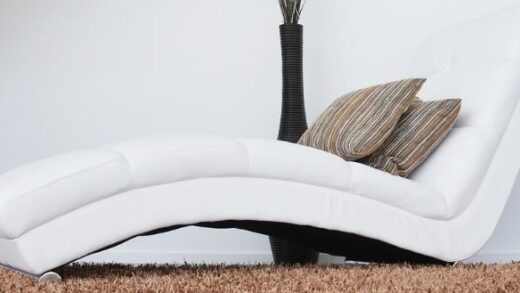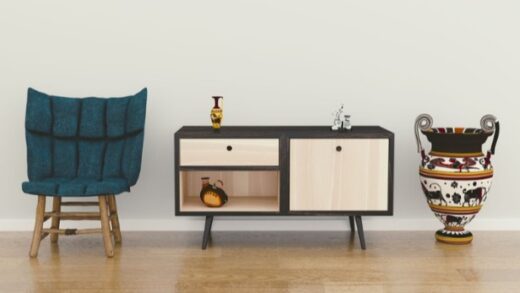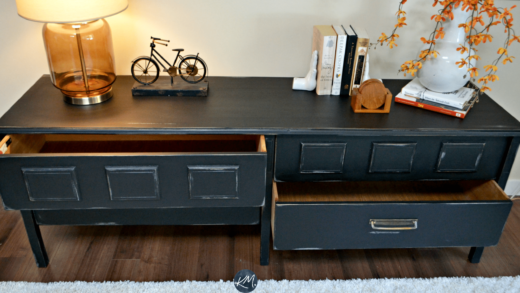Primitive furniture refers to furniture made by hand in the mid-18th and early 19th centuries before mass production became the norm, a sign that it is of high quality and beauty. Before buying it, look at this article first. You will learn types of primitive furniture, how to pick the right for you, and real milk paint is perfect for primitive furniture.
Table of Contents
What is Primitive Furniture?
The term “primitive furniture may sound like something cavemen set up in their crude versions of a living room, but it actually refers to furniture made by hand in the mid-18th and early 19th centuries before mass production became the norm, a sign that it is of high quality and beauty. Primitive furniture is also known as country furniture, and once you know what you’re looking for, it’s simple to identify thanks to its occasionally shoddy construction, unconventional design, and use of local woods.
Refinishing our primitive find is not only crafty but also in keeping with tradition. Primitive furniture varies in terms of categories, prices, condition, and design, and some pieces are polished or stained.
How Many the Different Types of Primitive Furniture?
There are two categories of primitive furniture, antiques and reproduction pieces. Over those who collect other types of antiques, which must be in immaculate condition to be valuable, those who collect authentic, antique primitives have a distinct advantage. What makes a primitive value to a collector is its weathered state over time. The small scars that are developed over years of use add character and charm, whether they take the form of chipped paint that reveals an earlier color or a patched-up area on a handmade quilt. Imperfections tell the story of the piece. Primitive pieces frequently have subdued color schemes, and any imperfections in their finishes only serve to enhance their allure. If they are antiques, their subdued colors demonstrate their age; if they are modern pieces, they simulate age. Craftsmen and designers go to great lengths to make their primitives appear as though they have been around for a hundred years. This is particularly true when it comes to making new pieces look old. A good reproduction primitive should appear to have been used and well-loved as it has been passed down from generation to generation.
How to Pick the Right Primitive Furniture for Your Project?
You can browse antique shops or flea markets that sell vintage items if you’re interested in finding primitive furniture. Look through online auction sites like eBay as well; you might find some great offers on vintage furniture there. If you also know of any local Amish businesses, they frequently sell handcrafted furniture with a very rustic appearance. Whichever route you decide, when you’re hunting for a piece of furniture to refinish, you want to look for three things:
- Good Bones: A solid foundation is the most crucial component of any project component. Is it simple to sit the piece? Is it functional or just decorative?
- Minimal Wear and Tear: Milk paint doesn’t need much preparation, but that changes if you’re planning to restore a dresser with numerous deep gouges or a chair with part of the seat missing.
- Interesting Details: Primitive furniture is prized for its intricate detailing, which highlights its handmade nature. Primitive furniture focuses on beautiful unfinished pieces, such as asymmetrical pieces that are also artistically pleasing.
What Are the Key Differences Between Primitive Furniture and Farmhouse Decor?
With a light, airy feel and warm, cozy accents that produce a simple atmosphere, the farmhouse style is based on the traditional American farmhouse. This decorative style aims to mimic what you would see if you entered a farmhouse in the 1700s or 1800s, as the name implies.
Although it uses earthier colors and a darker overall aesthetic, primitive furniture is very similar to the farmhouse style. Consider using antiques, dark wooden finishes, Americana, cast iron, and burnished metals.
The rustic appeal that underlies both farmhouse and primitive decor make them excellent candidates for mixing styles. Primitive decor focuses more on an antique feel overall, whereas farmhouse tends to have a cleaner, more sociable appearance. You can select what you like best from both categories based on your preferences, and it will probably go well together.
Why Real Milk Paint is Perfect for Primitive Furniture?
Primitive furniture is frequently found to be in poor condition. It waits at flea markets or in your grandmother’s basement until it’s rescued decades later or has work done on it in a wood shop, and by then it’s in desperate need of a little tender loving care. Milk paint is ideal for upcycling/updating primitive furniture because it:
- Requires little to no prep work: Making a salvaged piece paintable doesn’t have to take a lot of time. You can work on almost any primitive piece you want if you combine milk paint and Ultra Bond Adhesion Promotor; you probably won’t even need to buy primer.
- Is eco-friendly: There are no volatile organic compounds (VOCs) in milk paint, which is entirely organic. You can use it around your kids and pets, let it run off into your yard, and paint inside without any issues or negative effects.
- Won’t damage your piece: Keep your find’s integrity and charm intact while still giving it a well-earned facelift.
How to Use Milk Paint to Paint Primitive Furniture?
The act of painting itself is remarkably easy. Our milk paint is available in a powdered form; when combined with water, it will last for at least two weeks and possibly even a month. Apply with a roller brush for a textured finish or a brush for a rustic, antiqued appearance. Use waxes to increase the depth and contrast of engravings and other details, or apply a coat of oil to the paint to protect it from deterioration and the elements.
Primitive furniture refers to furniture made by hand in the mid-18th and early 19th centuries before mass production became the norm, a sign that it is of high quality and beauty. There are two categories of primitive furniture, antiques and reproduction pieces. Bones and details should be considered to fit your project. Real milk paint is a good choice.



